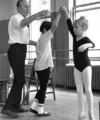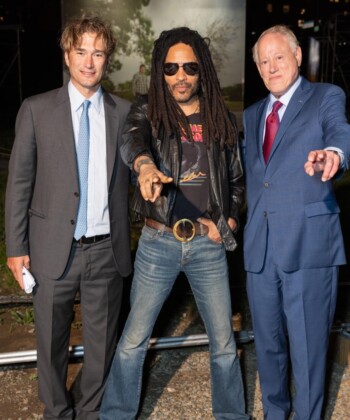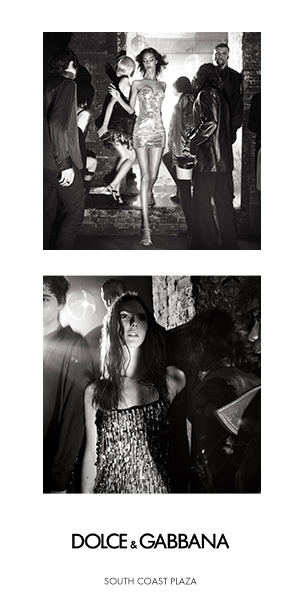He may be the only world-class artist who can boast of learning to paint via a correspondence course—in prison. Fortunately, Malcolm Morley was a better artist than a thief.
As colorful as his cinematic, action-packed paintings, Morley is sipping a cappuccino at the Carlyle hotel in New York and reminiscing about how he came to be a pioneer of photo-realism, the hyper-detailed style of painting that he prefers to call “super-realism” and that would help earn him the very first Turner Prize, in 1984, and the Francis J. Greenburger Award, which he received this spring. His latest batch of canvases, on view at Sperone Westwater Gallery in New York, makes references to numerous historical periods with depictions, in both two and three dimensions, of the Alamo, Napoleon and a cannon from the Battle of Trafalgar, for a different take on his longtime subject of war.
Morley’s psyche was marked by war from his earliest memories, when he was shipped off to boarding school in the U.K. at age 5 in 1936. His mother had not told him he was going until she said good-bye at the train station, leaving him with a lifetime of separation anxiety. But one night off the coast of Devon, where he’d been sent, a freighter was torpedoed, and the next day the schoolchildren were allowed to see the wreck, complete with floating loaves of bread. “That sinking freighter has been a recurring theme, so in a sense, it was a blessing,” he says. He loved war movies and was fascinated by the seeming adventure of Spitfire-Messerschmitt dogfights over London during the Blitz. Then, back with his mother, Morley survived a German “doodlebug” destroying their flat and, along with it, a model ship he’d built. “It was about three in the morning,” he recalls. “There was a huge bang—I felt it from my toenails to my head. We were refugees overnight.”
In 1958, after stints in prison and art school, Morley immigrated to New York, not because it was the home base of the Abstract Expressionists but because he was following a woman, the first of his five wives. “I never had girlfriends,” he says. “Just got married.” One day he tried to paint a ship in the harbor. When he realized he couldn’t see the bow and the stern simultaneously, he bought a postcard of it, which he then faithfully re-created five feet long in oil paint, ushering in photo-realism. “It required an enormous amount of concentration and willpower,” says Morley, who relied on a trick from art school: using a grid to size up the image from source material to canvas. Painting square by square with a fine brush, Morley perceived his creations as a series of tiny abstractions; only the results were representational.
He painted ships almost obsessively. “It took a while to realize I was trying to paint the ship that got blown up, that could never be painted,” he says. (Morley underwent 25 years of psychoanalysis. “Finally the shrink threw me out.”) His loosened-up images of the 1970s were the precursors to the Neo-Expressionism that fueled the 1980s art boom, and his subject matter broadened to airplane crashes, animals (harkening to the great British painter George Stubbs) and athletes, our modern-day heroes. At 83, he is still innovating. “I’ve come off the grid,” he says, somewhat triumphantly. Rather than working meticulously from a photo or a watercolor, Morley is improvising, composing the canvas one object at a time from models he has built—though with the same dedication to precision.
Robert Storr, dean of the Yale School of Art, calls Morley both “smart” and “unruly.” “He’s continued to make really interesting, eccentric, richly layered stuff, and he’s no kid,” says Storr. “He’s not housebroken, and his painting does not sit quietly on people’s walls.”
Brookhaven, Long Island, is now Morley’s home with his wife of 26 years, Lida. He misses the energy of the city but says, “I live in the light. Goethe’s last words were, ‘More light.’ I love the last words of dying people.” Goethe’s may be apocryphal, but asked to predict his own, Morley quips, “More recognition!” He laughs. “I’m pretty much insecure enough and secure enough to go on.”








































